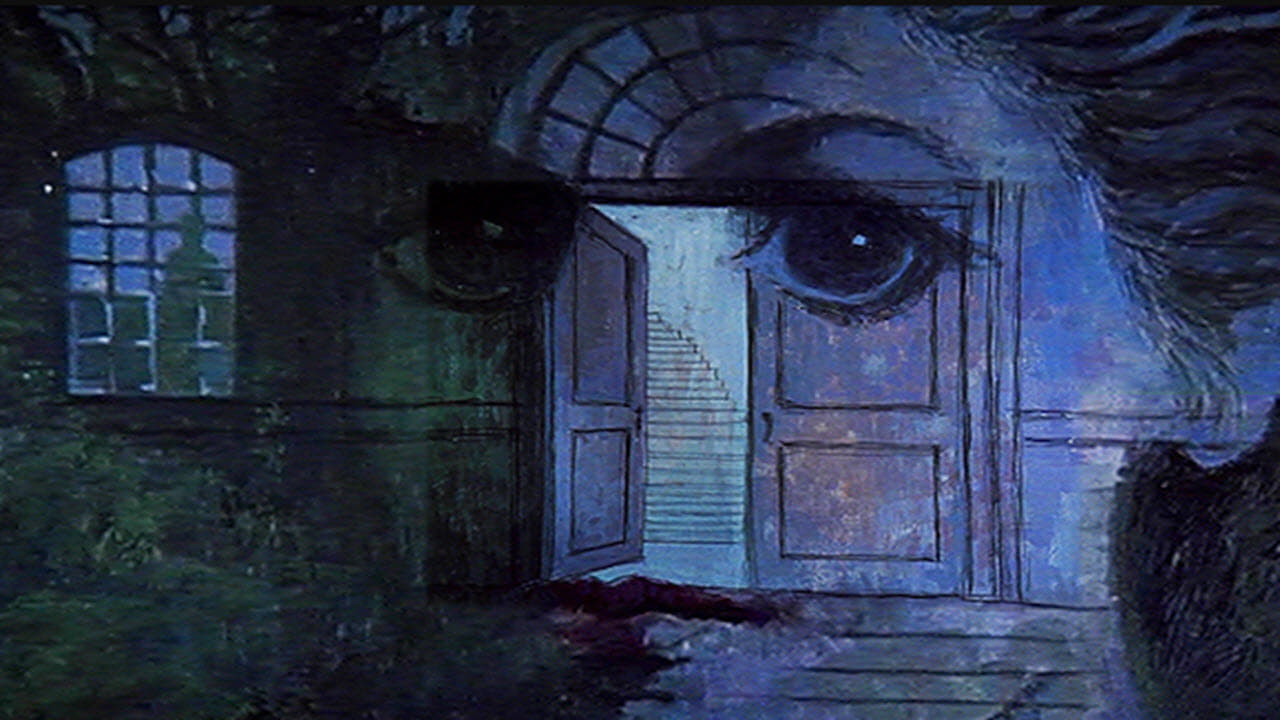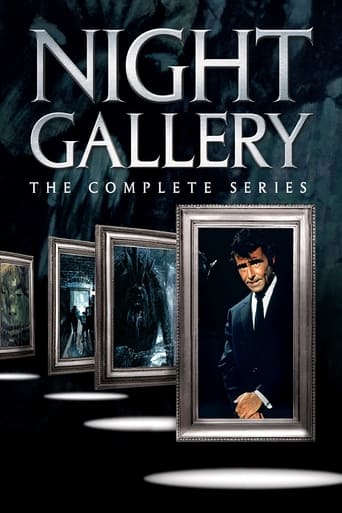Hellen
I like the storyline of this show,it attract me so much
JinRoz
For all the hype it got I was expecting a lot more!
InformationRap
This is one of the few movies I've ever seen where the whole audience broke into spontaneous, loud applause a third of the way in.
Adeel Hail
Unshakable, witty and deeply felt, the film will be paying emotional dividends for a long, long time.
alexanderdavies-99382
I view "Night Gallery" as a television series of two halves. The latter one was mainly ruined by that rather overbearing producer, Jack Laird. It is nothing short of astonishing in how much authority his word carried at "Universal" studios where "Night Gallery" was made. However, the first half of this show - up until the end of the second season - contains some of Rod Serling's greatest work as a writer of television drama. There are too many classic stories to list here but the writing is easily on a par with the best that "The Twilight Zone" had to offer. That is, on a good day. At its worst, "Night Gallery" makes for rather cringeworthy viewing but this is definitely not the fault of Rod Serling. To be fair to the man, the studio had the writer tied down to one of those dreaded "iron-clad contracts." To the bitter end, Jack Laird was to always have the final say in any decision and this tended to undermine Serling's reputation for writing serious drama. He must have squirmed with embarrassment at some of the ludicrous nonsense that he was lumbered with. I can't say I blame him. When the series was cancelled in 1973 after three seasons, I would wager that no one was more relieved. "Night Gallery" places a good deal more emphasis upon the Horror genre, than on Science Fiction or Fantasy. The format was quite different as well. Usually with this kind of series, the viewers would see one story per episode. With the above series, you would watch as many as two dramatic stories and one rather quirky segment at the insistence of Laird. To cater for all of this, "Night Gallery" was allotted an hour's worth of air time. The 1969 pilot episode was much longer - 90 minutes altogether - and this consisted of three dramatic stories. My favourite one out of these, is still "The Cemetery." I won't give away any plot details but it is brilliantly written. The story's title is taken from a short story by H.P Lovecraft yet bears little relation. The acting from Roddy McDowall and Ossie Davis is superb. The other two stories from the pilot episode are also very good. There are a few differences between this and the regular series that followed in 1970. The pilot episode has a completely different opening credit sequence and different music. I enjoyed this though as the viewer is given the impression of walking along a dark corridor before reaching the gallery in question. I found it to be imaginative and slightly eerie. Whilst introducing each story via a different painting, Rod Serling keeps each one covered with a red cover. In the regular series, the paintings are in full view. The idea of this opening with Rod Serling, was to imagine him as a curator of an Art Gallery. As he escorts most of the customers out of the building upon closing time, he invites a few people to remain so he can unveil some slightly more unconventional paintings that are usually hidden from the public gaze. There is some footage of Rod Serling delivering an advertisement on television about the upcoming series. 1970 to 1972 saw some terrific episodes. The opening credit sequence for the regular series, was quite original in itself. Not many people had heard a synthesizer music theme for a major television show before. The blending of different characters and how they are distorted, works to good effect. The budget was fairly tight. According to one of the many directors who worked on "Night Gallery," a vital scene from a story was deemed unsuccessful after this horse and cart failed to appear on cue. The take was ruined as a result and after taking a deep breath, the director in question approached Jack Laird about renting the horse and cart again, knowing how hectic the filming schedule was. Laird became rather annoyed by this request but still reluctantly paid the $75 that was needed. The scene of the story was completed without any further delay. The most unusual and bizarre events occur in the lives of very ordinary people, once fate has intervened. There are some fine actors who bring this marvellous dialogue to life. Larry Hagman, Burgess Meredith, William Windom, Leonard Nimoy, Bradford Dillman, Sally Field, Bill Bixby, Vincent Price, Raymond Massey, Jack Cassidy, Diane Keaton, Joseph Wiseman, Gary Lockwood, David Carradine, Edward G. Robinson, Yaphet Kotto, a very young pre- "Luke Skywalker" Mark Hamill, John Astin, David McCallum, Leslie Nielsen, Steve Forrest amongst others. It was a wise move in employing trained actors, rather than those who were established stars. After all, it takes an actor to give this dialogue the credence it deserves. I enjoy the stories that have period settings as well as the ones that are contemporary. We have incidents involving haunted houses, Devil worship, Vampires, Werewolves and plenty more besides. I watched some of the third season episodes but they aren't half as good as the previous ones. About 85% of the total number of stories are great, so I'd stick with those. Rod Serling really excelled himself with some more highly entertaining but also thought- provoking television drama.
AaronCapenBanner
This has often been considered a poor cousin to Rod Serling's other series "The Twilight Zone", and while it isn't in that league, it did present a number of standout segments like 'The Caterpillar', 'A Question Of Fear', 'The Devil Is Not Mocked', and my favorite 'Silent Snow, Secret Snow'.Rod would present each segment/episode by introducing a painting representing the basic story to be shown, and these paintings were usually quite chilling(like 'Pickman's Model'). There were some duds of course, mostly the comedic skits that were quite silly and pointless, though creator Jack Laird was said to be fond of them; season Two was the best of the three(take a bow Gerald Sanford!) Worth viewing, even if Mr. Serling wasn't as proud of it as he should have been...
Movie Nuttball
The Night Gallery was a great series. It had many great guest stars including Al Lewis, Vincent Price, John Carradine, Diane Keaton, Burgess Meredith, Chill Wills, Tom Bosley, John Astin, Phyllis Diller, Henry Silva, Diane Baker, John Randolph, Cesar Romero, Carl Reiner, and many, many more! The acting by all of these actors is very good. The dialog was really good in this series. The shorts were filmed very good. The music is good. Rod Serling hosted the show well. The short films are quite interesting and they really keeps you going. Most of them are spooky! This is a very good and thrilling series! Some of My favorites is Professor Peabody's Last Lecture, The Nature of the Enemy, and A Matter of Semantics to name a few. If you like classic shows like The Twilight Zone, The Outer Limits, The Nightstalker, and others, and classic Horror, Crime, Thrillers, Dramas, and interesting films then I strongly recommend you to go over to Amazon.com and buy the complete first season on DVD that is also includes the pilot as well today!
gothick42
This is for the person who inquired about a cannibalism story involving Voodoo and a Hawaiian luau. This was not an episode of Night Gallery; it was one of the stories in the Amicus movie Tales that Witness Madness, which came out around the same time as Night Gallery was on (early Seventies). The Voodoo/cannibalism episode starred Kim Novak as the mother and Mary Tam (the first Romana on Dr. Who) as her daughter. The episode seemed to have been filmed missing the climactic twist ending. To put it mildly, the whole thing seemed to be a mistake. Still, it's fun to watch Kim Novak essaying an affected performance style that makes one wonder whether she was directed to play the role as a retired female drag queen!

